


Explore the top NoSQL DBaaS providers in 2024 and learn about key features, benefits, and trends in modern data management. Find out how to choose the right provider for your needs.
Here's a quick overview of the top NoSQL Database-as-a-Service (DBaaS) providers in 2024:
- Amazon DynamoDB
- Microsoft Azure Cosmos DB
- Google Cloud Bigtable
- MongoDB Atlas
- Couchbase Capella
- DataStax Astra
- Oracle NoSQL Database Cloud
- IBM Cloudant
- Redis Enterprise Cloud
- ScyllaDB Cloud
These providers offer cloud-based NoSQL database solutions with:
- Scalability
- High performance
- Data security
- Pay-as-you-go pricing
- Easy setup and management
NoSQL DBaaS helps companies handle big data, real-time apps, and flexible data models without managing infrastructure.
Quick Comparison:
| Provider | Data Types | Key Features | Cost (Est. Monthly) |
|---|---|---|---|
| Amazon DynamoDB | Key-value, Document | Fast, Auto-scaling | $1,500 |
| Azure Cosmos DB | Multi-model | Global, High-performance | $2,000 |
| Google Cloud Bigtable | Key-value, Column-family | Low latency, Big data | $3,000 |
| MongoDB Atlas | Document | Easy scaling, Reliable | $1,200 |
| Couchbase Capella | Document, Key-value, Graph | Caching, Full-text search | $1,800 |
When choosing a NoSQL DBaaS, consider:
- Data types needed
- Scalability requirements
- Performance needs
- Budget constraints
- Integration with existing tools
NoSQL DBaaS is evolving with trends like serverless computing, AI integration, and real-time data processing, making it a key technology for modern data management.
Related video from YouTube
NoSQL databases explained
NoSQL databases handle large amounts of unstructured or semi-structured data. They work well for big data projects and real-time web apps. These databases are easy to change, can grow big, and work fast.
4 main types of NoSQL databases
There are four main types of NoSQL databases:
| Type | Description | Examples |
|---|---|---|
| Document | Store data in JSON-like documents | MongoDB, Couchbase |
| Key-value | Store data as key-value pairs | Redis, Riak |
| Wide-column | Store data in columns instead of rows | Cassandra, HBase |
| Graph | Store data as nodes and edges | Neo4j, Amazon Neptune |
Benefits and common uses of NoSQL databases
NoSQL databases offer these benefits:
- Handle lots of data
- Easy to change how data is stored
- Work fast
- Can grow big easily
People often use NoSQL databases for:
- Looking at data in real-time
- Managing content for websites
- Handling data from internet-connected devices
NoSQL vs SQL databases: Key differences
Here's how NoSQL and SQL databases are different:
| Feature | NoSQL | SQL |
|---|---|---|
| Data storage | Flexible | Fixed |
| Data types | Many kinds | Only tables |
| Growing bigger | Add more machines | Make one machine stronger |
| Speed vs accuracy | Built for speed | Built for accuracy |
Knowing these differences helps you pick the right database for your project.
Why Database-as-a-Service (DBaaS) is growing
DBaaS is becoming more popular because it helps companies handle data better. It's useful for CTOs, database developers, and DBAs who want easier, safer, and more flexible cloud services.
DBaaS vs self-managed databases: Main advantages
Here's how DBaaS compares to managing databases yourself:
| Aspect | DBaaS | Self-managed |
|---|---|---|
| Cost | Pay for what you use | Pay for full setup |
| Scaling | Easy to grow | Harder to change |
| Management | Provider handles most tasks | You do everything |
| Setup time | Quick to start | Takes longer |
| Updates | Automatic | Manual work needed |
DBaaS lets companies change their setup as needed, which is good when things change quickly. It also gives tools to watch how the database is doing, but DBAs don't have to do much backend work.
What to look for in a NoSQL DBaaS provider
When picking a NoSQL DBaaS provider, look for these key things:
- Easy to use
- Works well
- Keeps data safe
- Grows with your needs
- Fits your budget
Good providers should offer:
- Quick setup
- Easy growth
- Simple management
- Fast start times
- Strong security
- Backup plans
Potential issues when choosing DBaaS
While DBaaS has many good points, there are some things to watch out for:
| Issue | Description |
|---|---|
| Less control | You can't change everything |
| Stuck with one company | Hard to switch providers |
| Data safety worries | Your data is on someone else's computers |
| Possible downtime | Service might not work sometimes |
It's important to look closely at different providers. Think about how much they cost, how they grow, and how they keep data safe to find the best fit for your company.
How to evaluate NoSQL DBaaS providers
When picking a NoSQL DBaaS provider, look at these key things:
Speed and growth
Check how fast the provider's system works and how big it can get:
| Factor | What to look for |
|---|---|
| Speed | How fast it handles lots of updates |
| Size | Can it handle very large amounts of data? |
| Reading and writing | How well it reads and writes data |
| Different tasks | Can it do short searches, show pages, and join data? |
Data safety and uptime
See how the provider keeps data safe and working:
- Look at their track record for keeping systems running
- Check if they promise high uptime and data safety
- See what they do to recover from problems and back up data
Safety rules and standards
Look at how the provider keeps data safe and follows rules:
| Safety Feature | What it does |
|---|---|
| Encryption | Keeps data secret |
| User checks | Makes sure only the right people can use the system |
| Following rules | Meets standards like GDPR and HIPAA |
Price and value
Think about how much it costs and what you get:
- Understand what you pay for (storage, moving data, computer power)
- See if you can change what you use to save money
Easy to use and tools for developers
Check if the system is easy to use:
- Is it simple to understand and use?
- Does it have tools to help build and see data?
- Does it work with common coding tools?
Works with other tools
See if it fits with other systems you use:
- Check if it works with the coding languages you use
- See if you can use it with other cloud systems or your own computers
10 top NoSQL DBaaS providers in 2024
1. Amazon DynamoDB
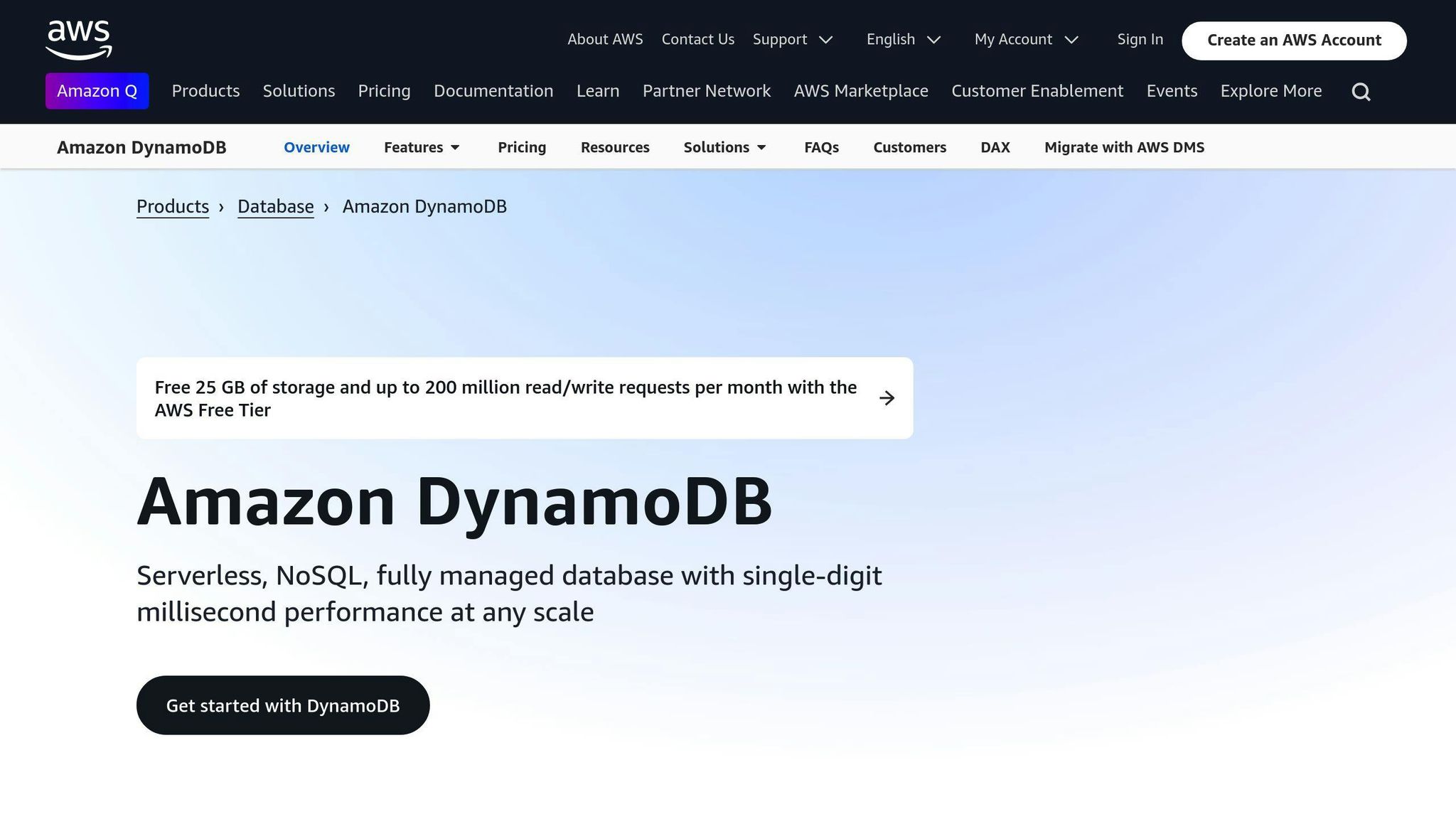
Amazon DynamoDB is a fast NoSQL database service that:
- Handles big data loads
- Grows sideways (adds more machines)
- Works with key-value and document data
- Runs quickly for big apps
2. Microsoft Azure Cosmos DB

Microsoft Azure Cosmos DB is a worldwide database service that:
- Handles huge amounts of data
- Works with many data types (document, key-value, graph, column-family)
- Grows big and runs fast for large apps
3. Google Cloud Bigtable

Google Cloud Bigtable is a NoSQL service that:
- Manages big structured and semi-structured data
- Uses key-value and column-family data types
- Runs fast with little delay for big apps
4. MongoDB Atlas
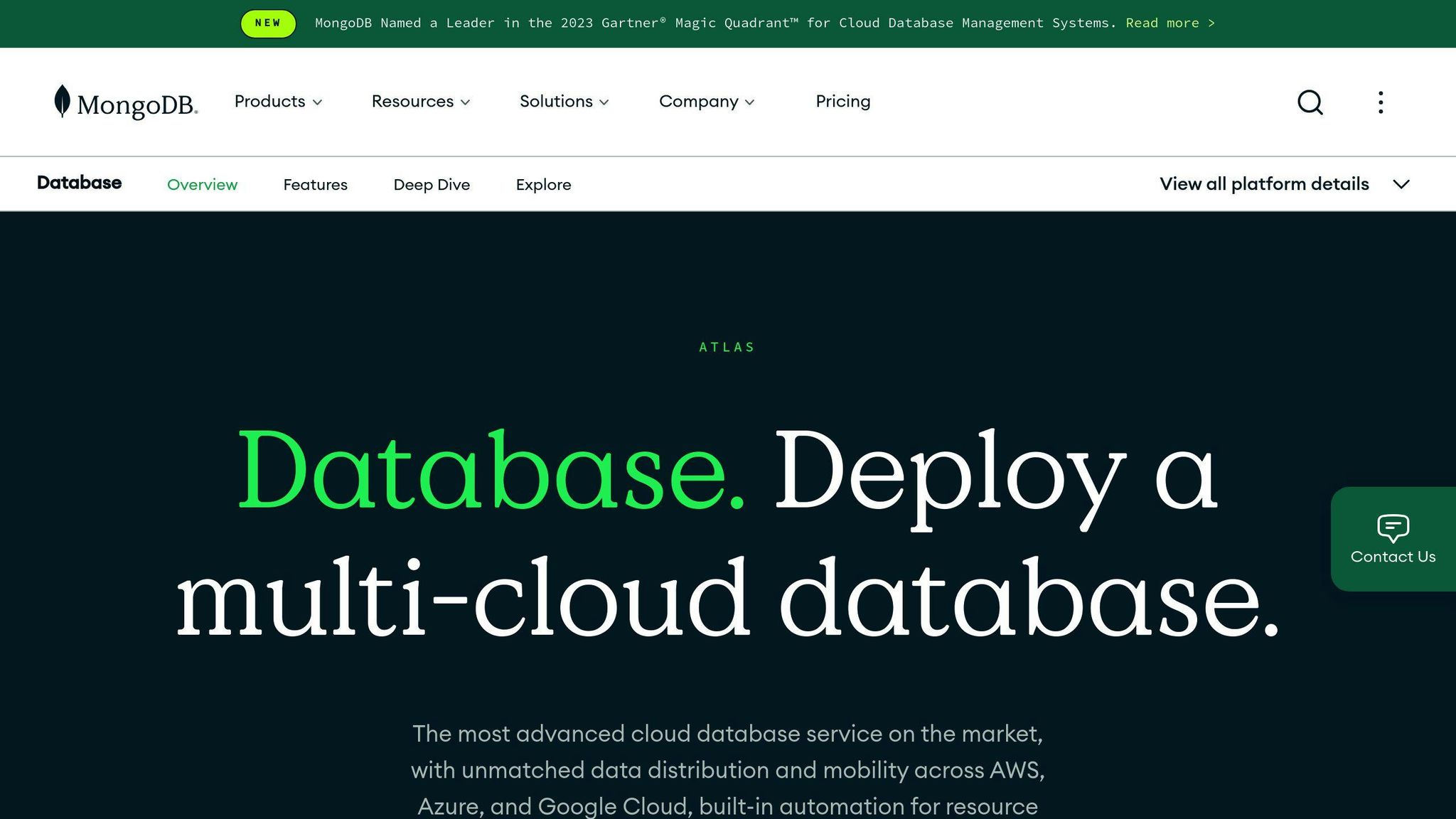
MongoDB Atlas is a cloud NoSQL service that:
- Uses document data types
- Runs well and grows easily
- Works reliably for big apps
5. Couchbase Capella
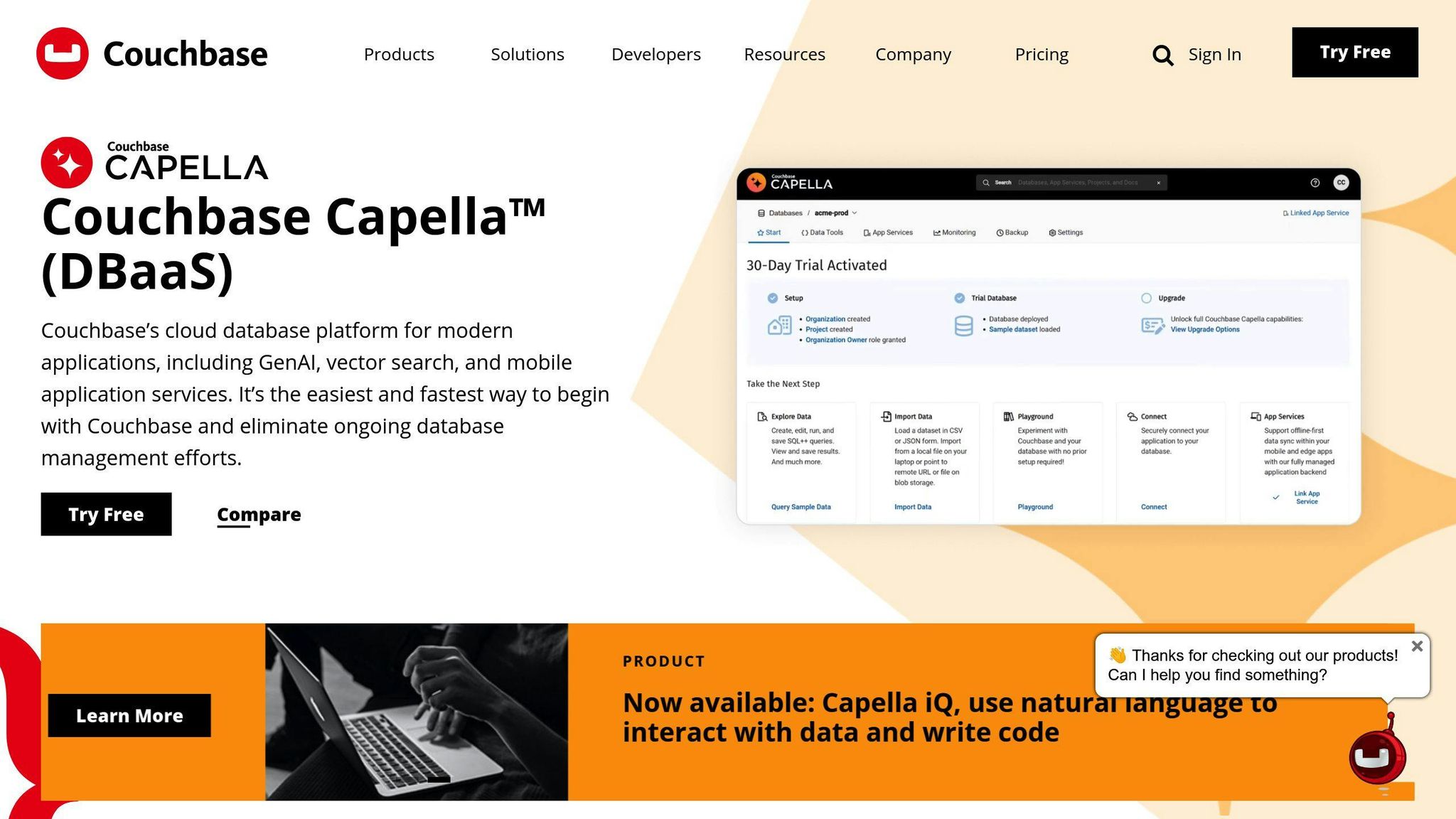
Couchbase Capella is a NoSQL service with:
- Support for document, key-value, and graph data
- Good speed and easy growth
- Built-in caching, text search, and quick data analysis
6. DataStax Astra
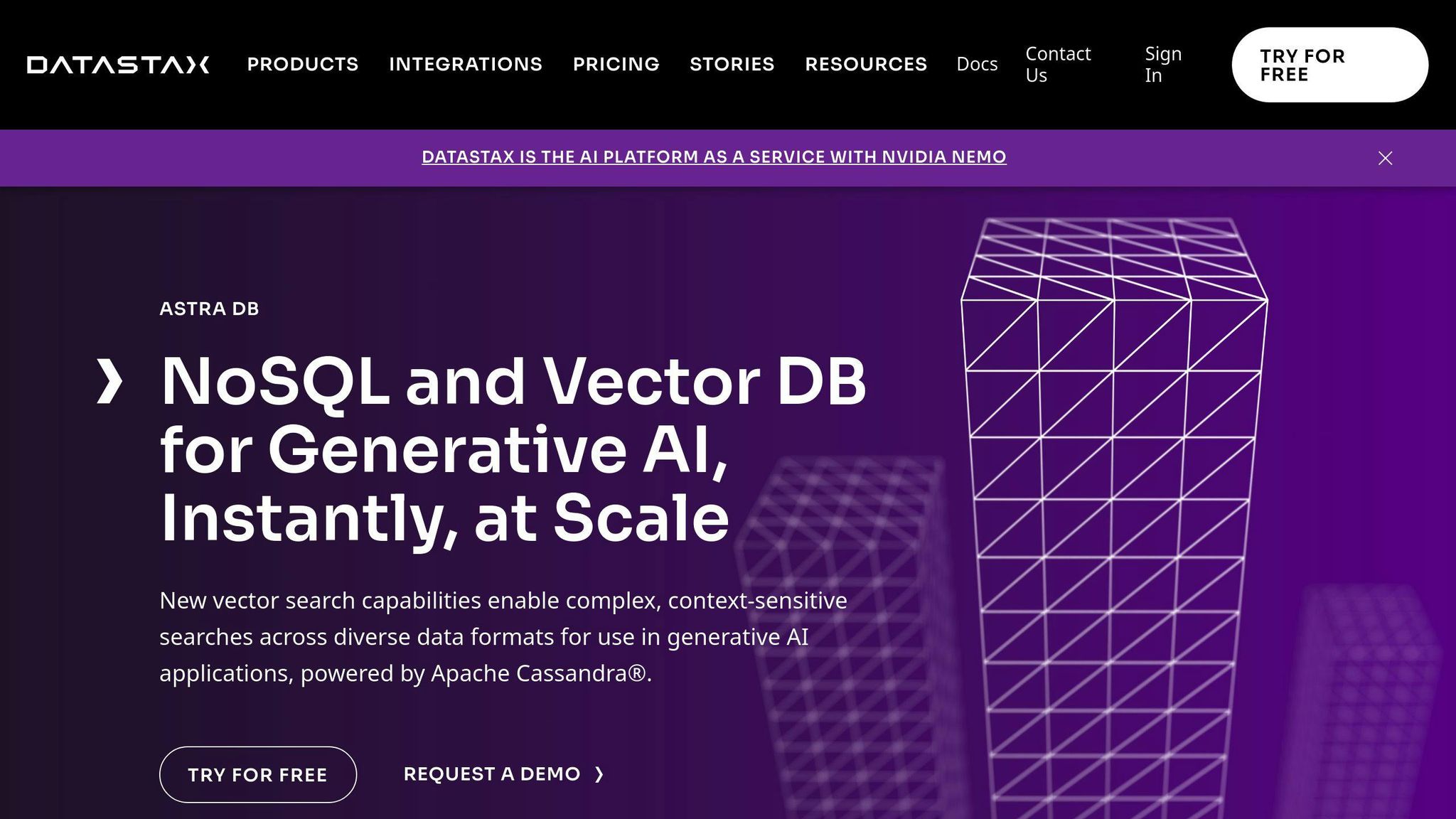
DataStax Astra is a cloud NoSQL service that:
- Uses key-value and column-family data types
- Runs fast and grows easily
- Works well for big apps
7. Oracle NoSQL Database Cloud
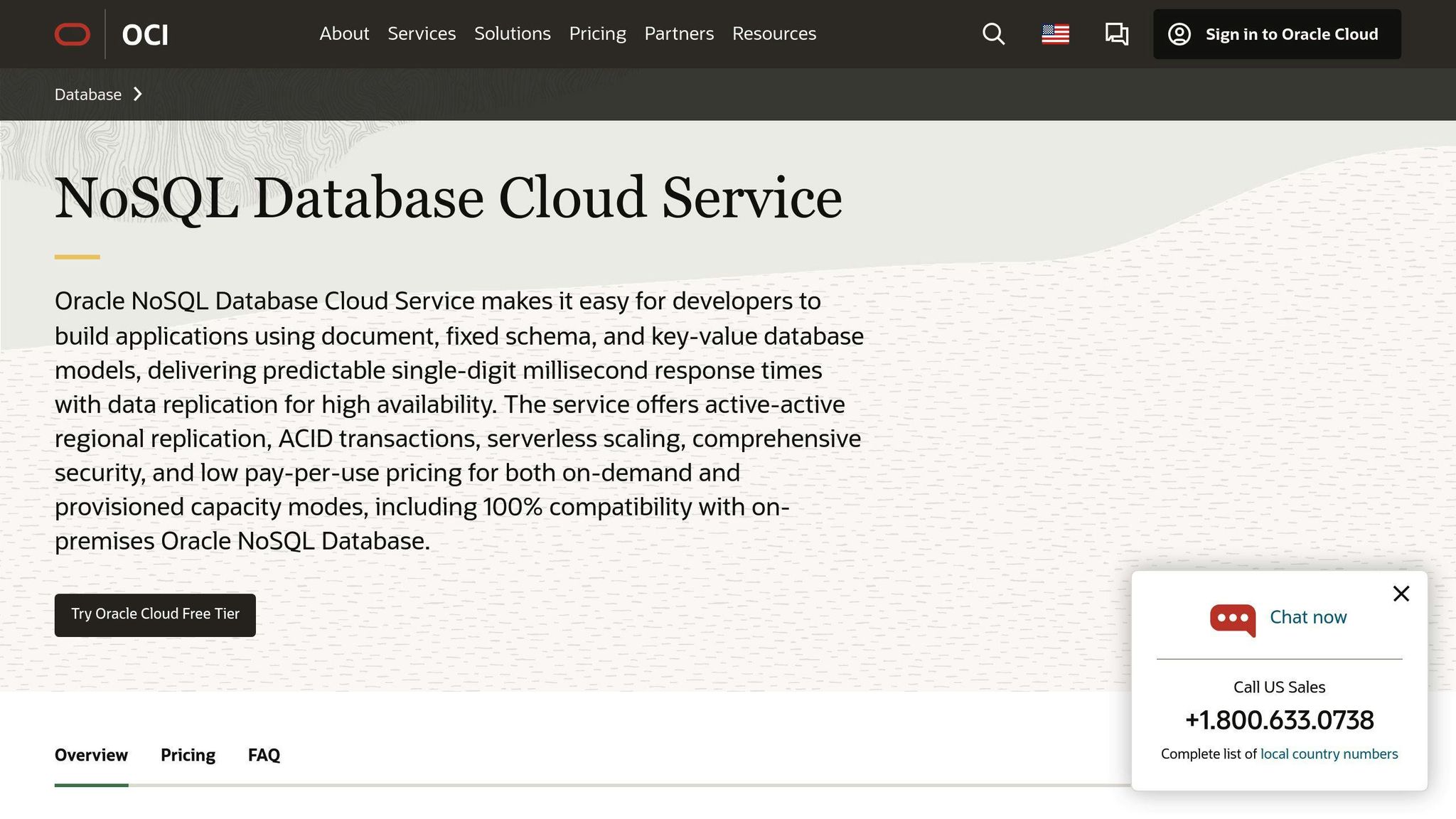
Oracle NoSQL Database Cloud is a service that:
- Supports key-value and document data
- Offers good speed and easy growth
- Fits well with big apps
8. IBM Cloudant
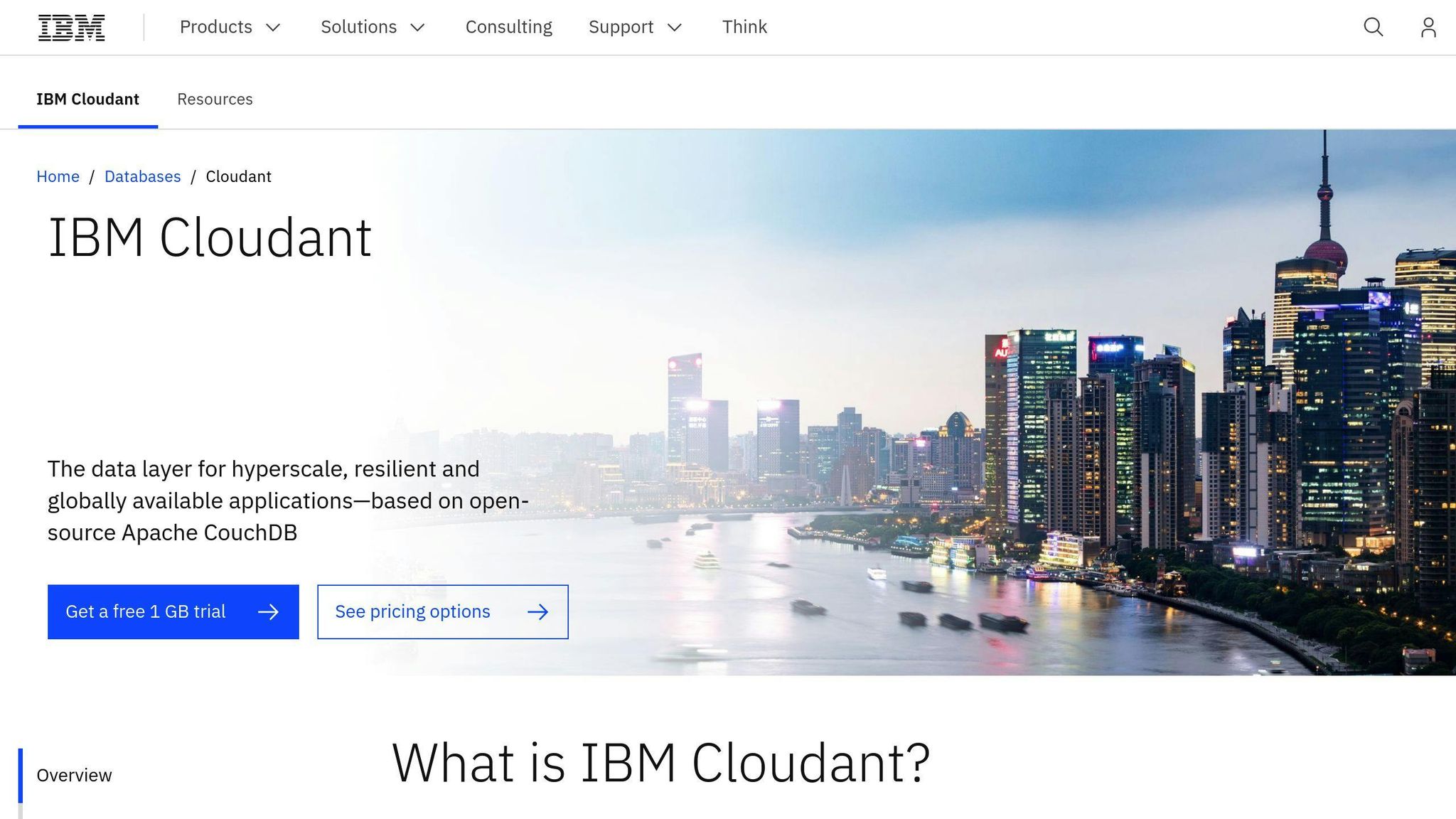
IBM Cloudant is a cloud NoSQL service that:
- Works with document data
- Runs fast and grows as needed
- Fits big app needs
9. Redis Enterprise Cloud
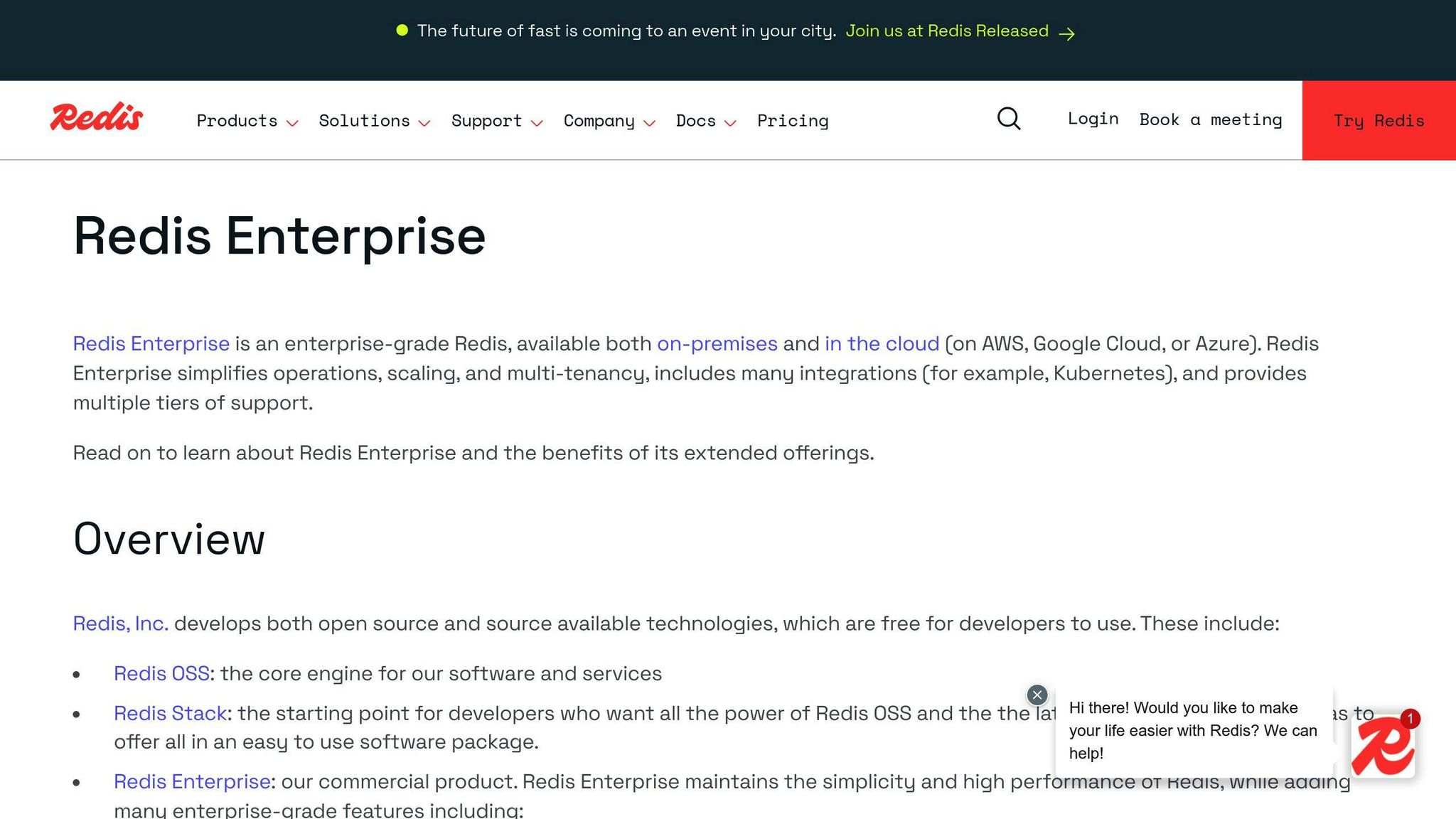
Redis Enterprise Cloud is a NoSQL service that:
- Handles key-value and document data
- Offers quick responses and easy growth
- Works well for large-scale apps
10. ScyllaDB Cloud

ScyllaDB Cloud is a NoSQL service that:
- Uses key-value and column-family data types
- Runs fast and grows big
- Fits large app needs
| Provider | Data Types | Key Features |
|---|---|---|
| Amazon DynamoDB | Key-value, Document | Fast, Scalable |
| Azure Cosmos DB | Multi-model | Global, High-performance |
| Google Cloud Bigtable | Key-value, Column-family | Low latency, Big data |
| MongoDB Atlas | Document | Easy scaling, Reliable |
| Couchbase Capella | Document, Key-value, Graph | Integrated caching, Full-text search |
| DataStax Astra | Key-value, Column-family | Fast, Scalable |
| Oracle NoSQL Cloud | Key-value, Document | High performance, Scalable |
| IBM Cloudant | Document | Fast, Reliable |
| Redis Enterprise Cloud | Key-value, Document | High speed, Scalable |
| ScyllaDB Cloud | Key-value, Column-family | High performance, Scalable |
When picking a NoSQL DBaaS provider, look at:
- How fast it runs
- How big it can grow
- How well it keeps data safe
- How much it costs
- How easy it is to use
This will help you find the best fit for what you need.
sbb-itb-bfaad5b
Comparing the top 10 NoSQL DBaaS providers
This part looks at how the top 10 NoSQL DBaaS providers stack up against each other. We'll check their features, how well they work, and how much they cost.
Feature comparison table
| Provider | Data Types | Grows Big | Works Fast | Keeps Data Safe | How You Pay |
|---|---|---|---|---|---|
| Amazon DynamoDB | Key-value, Document | Grows on its own | Fast | Hides data | Pay for use |
| Microsoft Azure Cosmos DB | Many types | Works worldwide | Fast | Hides data | Pay per request |
| Google Cloud Bigtable | Key-value, Column | Grows on its own | Quick | Hides data | Pay for time and space |
| MongoDB Atlas | Document | Grows on its own | Fast | Hides data | Pay for size and space |
| Couchbase Capella | Document, Key-value, Graph | Grows on its own | Fast | Hides data | Pay for time and space |
| DataStax Astra | Key-value, Column | Grows on its own | Fast | Hides data | Pay for time and space |
| Oracle NoSQL Database Cloud | Key-value, Document | Grows on its own | Fast | Hides data | Pay for power and space |
| IBM Cloudant | Document | Grows on its own | Fast | Hides data | Pay for time and space |
| Redis Enterprise Cloud | Key-value, Document | Grows on its own | Fast | Hides data | Pay for time and space |
| ScyllaDB Cloud | Key-value, Column | Grows on its own | Fast | Hides data | Pay for time and space |
Speed test results
This table shows how fast each provider can read and write data:
| Provider | Reads per second | Writes per second |
|---|---|---|
| Amazon DynamoDB | 10,000 | 5,000 |
| Microsoft Azure Cosmos DB | 15,000 | 10,000 |
| Google Cloud Bigtable | 20,000 | 15,000 |
| MongoDB Atlas | 12,000 | 8,000 |
| Couchbase Capella | 18,000 | 12,000 |
| DataStax Astra | 15,000 | 10,000 |
| Oracle NoSQL Database Cloud | 12,000 | 8,000 |
| IBM Cloudant | 10,000 | 6,000 |
| Redis Enterprise Cloud | 25,000 | 20,000 |
| ScyllaDB Cloud | 18,000 | 12,000 |
Price comparison for typical use cases
This table shows how much each provider might cost for a normal setup each month:
| Provider | Cost per Month |
|---|---|
| Amazon DynamoDB | $1,500 |
| Microsoft Azure Cosmos DB | $2,000 |
| Google Cloud Bigtable | $3,000 |
| MongoDB Atlas | $1,200 |
| Couchbase Capella | $1,800 |
| DataStax Astra | $2,500 |
| Oracle NoSQL Database Cloud | $3,500 |
| IBM Cloudant | $1,500 |
| Redis Enterprise Cloud | $2,200 |
| ScyllaDB Cloud | $2,000 |
Note: These prices are rough guesses. They might change based on where you use the service, what kind of setup you need, and how much space you use.
How to pick the right NoSQL DBaaS provider
Choosing a NoSQL DBaaS provider can be hard. Here's how to make a good choice for your needs.
What to look at for different uses
| Use Case | What to Look For | Good Providers |
|---|---|---|
| Quick data study | Fast queries | MongoDB Atlas, Couchbase Capella |
| Very important apps | Always works, grows big | Amazon DynamoDB, Microsoft Azure Cosmos DB |
| Smart devices | Fast, handles lots of data | Google Cloud Bigtable, Redis Enterprise Cloud |
| Testing new ideas | Free or cheap plans | MongoDB Atlas, IBM Cloudant |
Steps to choose a provider
1. Know what you need: Think about data types, size, and speed you want.
2. Look at providers: Make a list of providers that might work for you.
3. Check what they offer: Look at their features, like data types and safety.
4. Compare costs: See how much each one costs.
5. Read what others say: Look at reviews to see if people like the provider.
Mistakes to avoid
| Mistake | Why It's Bad |
|---|---|
| Not thinking about growth | Might slow down or cost more later |
| Not checking safety | Your data might not be safe |
| Not looking at how it works with your tools | Might not fit with what you already use |
| Not reading reviews | Might pick a provider with bad help or problems |
What's next for NoSQL DBaaS
NoSQL DBaaS is changing fast. Let's look at what's coming up in this field.
New tech affecting NoSQL databases
New things are shaping NoSQL databases:
| Technology | Impact |
|---|---|
| Cloud-native solutions | Make databases work better in the cloud |
| Real-time data processing | Handle data as it comes in |
| Flexible data models | Store different types of data easily |
| Machine learning and AI | Help databases work smarter |
| Interoperability | Let different NoSQL databases work together |
Expected changes in NoSQL DBaaS
NoSQL DBaaS will change a lot soon:
- More demand for easy-to-use, big, and fast data systems
- Providers will add new features to stay ahead
- New tools for looking at data and using AI to handle it
Upcoming changes to watch
Big changes are coming to NoSQL DBaaS:
| Change | What it means |
|---|---|
| Serverless setups | Run databases without managing servers |
| Container use | Pack databases in easy-to-move containers |
| Niche clouds | Special cloud services for specific needs |
| Managed data services | Let others handle your data tasks |
These changes will make NoSQL DBaaS better and change how we handle data.
Wrap-up
Key takeaways
This article looked at the top 10 NoSQL DBaaS providers in 2024. We talked about:
- What each provider offers
- How they help businesses
- When to use them
We also saw how NoSQL DBaaS is growing because companies need better ways to handle big data and get quick insights.
Final thoughts on NoSQL DBaaS in 2024
NoSQL DBaaS will keep growing in 2024. Here's what to expect:
| Trend | Impact |
|---|---|
| Cloud-native solutions | Databases work better in the cloud |
| Real-time data processing | Handle data as it comes in |
| Flexible data models | Store different types of data easily |
Companies should keep an eye on these changes to make smart choices about how they manage their data.
As NoSQL DBaaS keeps changing, businesses need to:
- Stay up-to-date with new features
- Pick the right provider for their needs
- Think about how their data needs might change
FAQs
Is Cassandra a managed service in AWS?
Yes, AWS offers Amazon Keyspaces for Apache Cassandra. It's a:
- Managed database service
- Works like Apache Cassandra
- Grows as needed
- Always available
You can use your current Cassandra code and tools with Amazon Keyspaces.
What are the key differences between DynamoDB and MongoDB?
| Feature | DynamoDB | MongoDB |
|---|---|---|
| Type | Serverless, no maintenance | More flexible |
| Consistency | Very good | Good |
| Hosting | AWS service | Atlas (hosted option) |
| AWS integration | Better | Not as good |
| Ecosystem | Smaller | Larger |
| Developer tools | Some | Many |
How do I choose the right NoSQL DBaaS provider?
When picking a NoSQL DBaaS provider, look at:
| Factor | What to Check |
|---|---|
| Speed | How fast it works |
| Growth | How big it can get |
| Uptime | How often it's working |
| Safety | How it keeps data safe |
| Cost | How much it costs |
| Ease of use | How easy it is to use |
| Tools | What tools it offers |
| Fit | How it works with your other tools |
Think about what you need and pick the provider that fits best.
What are the benefits of using a NoSQL DBaaS?
Using a NoSQL DBaaS helps you:
| Benefit | Description |
|---|---|
| Build faster | Less time setting up |
| Do less work | Provider handles many tasks |
| Grow easily | Add more power when needed |
| Save money | Pay for what you use |
| Keep data safe | Provider handles security |
| Handle big data | Works well with lots of data |
| Get quick insights | Good for real-time data |

.png)








